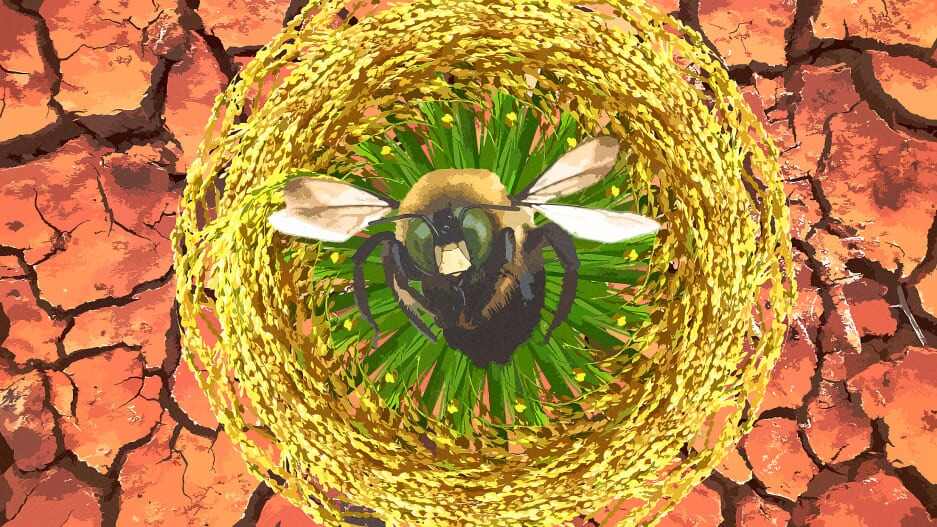- | 9:00 am
The business case for reversing extinction
Biodiversity affects the global economy more than people realize.

Thirty thousand species are going extinct each year according to Harvard biologist E. O. Wilson, and an additional one species per million are traditionally at risk annually. Because you might not notice these detrimental changes from within your downtown office today, you might not think it will impact your business. But the reality is, the extinction crisis is a business crisis.
According to BCG, the global economy takes more than a $5 trillion hit annually from the ecosystem functionality decline, from the loss of natural services. An astounding $44 trillion, more than half of the global gross domestic product, relies on nature, including food, materials, and fuel, according to UNPRI. The economic impacts of the loss of species and lack of diversity is a business problem.
This is not happening in the future—this is happening today. Lack of biodiversity will impact environmental ecosystems, which will threaten production capacity and current supply chain systems. Defaults on loans, bankruptcies, and a slump in company values could follow, impacting lenders, stock indices, and investors. Businesses, industries, and entire economies are threatened if ecosystems collapse.
Species extinction impacts the economy in direct, indirect, and corollary ways.
Direct: An obvious example surrounds food production. Pollinator species, like bees, are in steady decline. Yet plants that depend on pollination account for 35% to 75% of all crops. Pollinator extinction severely reduces the capacity to grow those crops. Loss of pollinators puts the annual global crop output is at risk, an estimated $235 billion to $577 market value
Indirect: A more recent example relates to the COVID-19 pandemic, which saw the median global GDP drop by 3.9% from 2019 to 2020, making it the worst economic downturn since the Great Depression. According to news outlets in early 2022, the International Monetary Fund managing director estimated a drop in $12.5 trillion in global output from the pandemic.
Research published in Lancet Public Health shows how anthropogenic activities drive the zoonotic disease emergence and how such effects can exacerbate the initial drivers, resulting in feedback loops that are likely to promote future zoonotic disease outbreaks. Preventing deforestation and extinction is pivotal to averting the costs of future pandemics.
Corollary: Finally, extinction and the economic impact of a decline of natural regulatory functions (i.e. trees and plants that protect environments) increase major environmental disturbances like flooding, which extend beyond industries that rely on natural inputs for their production. Floods, heat waves, and unstable weather costs businesses trillions. One recent report found that floods and other water-related disasters could cost the global economy $5.6 trillion by 2050. Extreme weather conditions, such as floods, storms, and droughts, caused $224 billion in worldwide losses in 2021.
“Extinction, at its current rate, will ensure that financial markets will collapse, which will happen shortly before extinction of the human race if no urgent action is taken,” Dr. Jill Atkins and Barry Atkins wrote in Around the World in 80 Species.
But this doesn’t have to be our future.
Investors and businesses can begin to think about extinction as a business systems issue and deliver absolute returns that tailor investment activities to manage biodiversity loss as a systemic risk, rather than just through individual holdings—which UNPRI recommends for universal investors and asset owners. By changing how we think of extinction from an environmental problem to an economic one, we can galvanize action and funding in a new way.
The recent COP15 Summit on Biodiversity was a landmark step in protecting and securing nature. And, as businesses and investments make the smart move forward, we must also continue innovating to uncover the science necessary to preserve every species we can. The more we can protect specific species, the better chance we have of protecting all varieties. And for every species, we protect, the better chance we have of bolstering economies, our populations, and our planet.
Any loss of species weakens the functionality of an ecosystem. The ecosystem we often speak about when referring to extinction is environmental, but it’s critical we expand our thinking to also include the business ecosystem within this framework.
A collective approach to managing and responding to loss is not a harm to business profit growth. In fact, developing technologies to de-extinct and truly preserve species is the only way to maintain and encourage the growth of business revenue, business capacity, and the economic systems that we depend on.








































